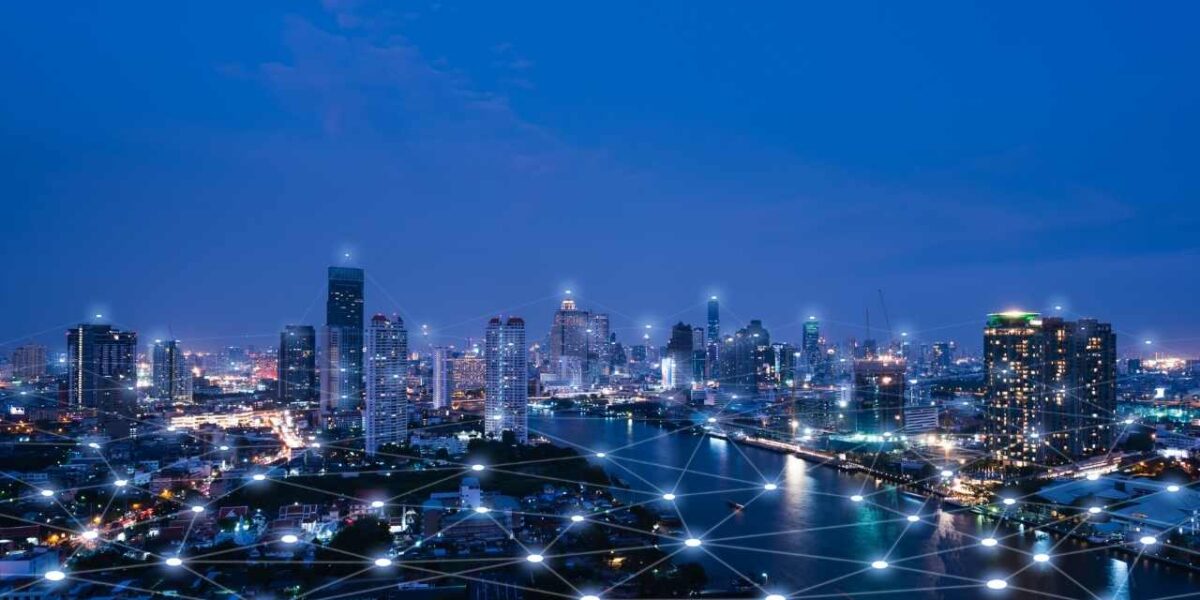TechTarget reports that enterprise spending on IoT projects is expected to ramp up this year. Research firm IDC predicted a double-digit growth rate in 2021, with a compound annual growth rate of 11.3% from 2020 to 2024. IDC cited healthcare, insurance and education as leaders in IoT spending.
Researchers at Statista predicted high growth with the global IoT market for end-user offerings was expected to grow from $212 billion in 2019 to $1.6 trillion by 2025.
Those IoT connections span across the globe and throughout industries, connecting individual homes, offices and vehicles, with the most prominent applications of IoT technologies. These are the top 7 IoT applications based on TechTarget.
1. Connected vehicles
Autonomous vehicles are one of the most notable examples of IoT in action. Self-driving cars and trucks use several connected devices to safely navigate roadways in all traffic and weather conditions. The technologies in use include artificial intelligence (AI)-enabled cameras, motion sensors and onboard computers.
IoT connections also exist on conventional vehicles, with manufacturers installing connected devices to monitor performance and manage computerized systems.
IoT can add business value to several industries, including construction, manufacturing, retail and transportation.
2. Smart cities
Smart cities are consolidating IoT deployments across many facets to give them a holistic view of what’s happening in their jurisdictions.
Smart cities generally incorporate connected traffic management systems and their smart buildings. They might include smart private buildings, too. Smart cities might also tie into smart grids and use environmental monitoring to create an even larger IoT ecosystem that provides real-time views of the various elements affecting their municipalities’ life.
3. Traffic management
Roadway infrastructure has become more connected in the past decade, with cameras, sensors, traffic light controls, parking meters and even smartphone traffic apps transmitting data that are then used to help avert traffic jams, prevent accidents and ensure smooth travel.
For example, cameras detect and transmit data about traffic volume to major management groups that can then analyze the information to determine what and when mitigation steps must be taken.
Sensors on traffic signals can detect varying levels of light in the sky and adjust the brightness of the signals, helping ensure they’re always visible to drivers.
Connected devices can detect open parking spaces and transmit that information to kiosks or apps to alert drivers.
Monitors on bridges collect and transmit data for analysis about their structural health, alerting authorities to maintenance needs before any failure or issue.
4. Environmental monitoring
Connected devices can collect IoT data indicating the health and quality of air, water and soil, fisheries, forests and other natural habitats.
As such, IoT delivers the ability to not only access significantly more real-time data about the environment at any given time and place, but it also enables a range of organizations in various industries to use that data to glean actionable insights.
Such information can help government agencies better monitor and predict natural disasters like tornados and better manage and protect land and wildlife populations. Companies can use this data to better limit their carbon footprint, more effectively document compliance with environmental regulations and more efficiently plan around weather conditions that affect their business.
5. Smart buildings and smart homes
Property owners are using the power of IoT to make all sorts of buildings smarter, meaning they’re more energy-efficient, comfortable and convenient, as well as healthier and possibly safer.
An IoT ecosystem in a commercial building could include monitoring the HVAC infrastructure that uses real-time data and automation technologies to constantly measure and adjust the temperature for optimum energy efficiency and comfort. Meanwhile, AI cameras could aid crowd management to ensure public safety at events such as sold-out concerts.
On the homefront, consumers can install intelligent technologies, such as door locks, appliances, thermostats and smoke detectors, that help them with their everyday needs by, for example, coordinating temperature controls to the owners’ schedules.
6. Supply chain management
Supply chain management has been undergoing modernization, thanks to low-power sensors, GPS and other tracking technologies that pinpoint assets as they move along a supply chain. Such information lets managers more effectively plan and more confidently reassure stakeholders about the location of items shipped or received.
That visibility is beneficial, but it’s only the start of IoT’s value proposition to this discipline. IoT technologies can also monitor and manage delivery requirements, for example, measuring and maintaining a specified temperature throughout transport to ensure quality and safety controls. Additionally, back-end analytics capabilities can use IoT-generated data to determine supply chain improvements, such as more efficient routes or shipping times.
7. Industrial, agricultural and commercial management
IoT has numerous applications in industrial and commercial settings, enabling everything from predictive maintenance to improved security at facilities to intelligent agriculture. These wide-ranging use cases employ an equally expansive list of IoT technologies.
A manufacturer might use machine-to-machine connected devices to map workloads as part of an industrial IoT deployment. A factory could track wear and tear on equipment to schedule preventive maintenance at an optimal time. Companies can use employee badges or wearable devices embedded with RFID chips to manage and control physical access to their facilities. And farmers can opt for locational technologies integrated with environmental monitors and their field equipment to automate and maximize their seed allocations.


